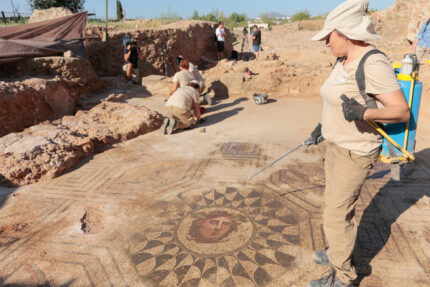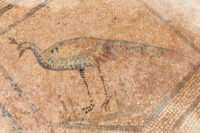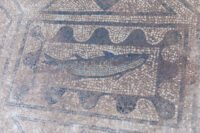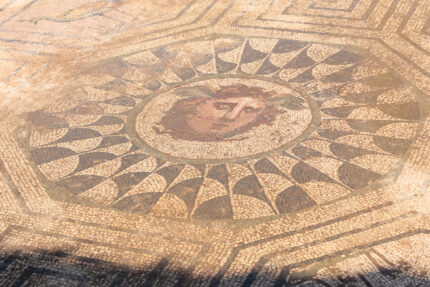 Mérida is having a very good summer, archaeologically speaking. Archaeologists just found a huge bathhouse in a Roman home next to the amphitheater. Now students from an archaeology workshop have unearthed a large, multi-colored mosaic of Medusa surrounded by complex geometric patterns, peacocks and fish.
Mérida is having a very good summer, archaeologically speaking. Archaeologists just found a huge bathhouse in a Roman home next to the amphitheater. Now students from an archaeology workshop have unearthed a large, multi-colored mosaic of Medusa surrounded by complex geometric patterns, peacocks and fish.
The mosaic was discovered at the Huerta de Otero site on the western side of the city. The site was first excavated in 1976, revealing remains of an opulent Roman domus, but it was on private property and neglected for decades. The city of Mérida acquired the Huerta de Otero site in 2019 and for the past four years it has been excavated by students from the Barraeca II Professional School.

 The Medusa mosaic paved the floor of one of the main rooms of the villa, likely the triclinium (formal dining room), covering a surface of area more than 320 square feet. The central panel is a winged head of Medusa inside a round border surrounded by a shield of black and white semi-circular shapes that create a dynamic illusion of curved triangles in movement. An outer octagon bounds the Medusa and shield. Meander patterns connect the octagonal border to smaller panels that contain animal figures, including fish and birds, floral motifs and masks. Four peacocks, each representing one of the four seasons, appear in the corners of the mosaic.
The Medusa mosaic paved the floor of one of the main rooms of the villa, likely the triclinium (formal dining room), covering a surface of area more than 320 square feet. The central panel is a winged head of Medusa inside a round border surrounded by a shield of black and white semi-circular shapes that create a dynamic illusion of curved triangles in movement. An outer octagon bounds the Medusa and shield. Meander patterns connect the octagonal border to smaller panels that contain animal figures, including fish and birds, floral motifs and masks. Four peacocks, each representing one of the four seasons, appear in the corners of the mosaic.
The head of Medusa in the middle of an illusionistic “spinning shield” was a common motif on Roman mosaic floors, an abstract reference to the aegis of Athena, the cloak or shield featuring the head of the Gorgon. The polychrome mosaic style suggests it was created in the 2nd century A.D.

Why is this medusa? The figure looks male and I see wings not snakes. Any expert opinion?
The depiction of Medusa as wavy-haired with wings on top and two barely-recognizable snakes tied like a ribbon under the chin was the most common depiction in the Roman imperial era. I wrote a little about the evolution of the iconography of the gorgon in this post last year.